ATP & ADP – Biological Energy
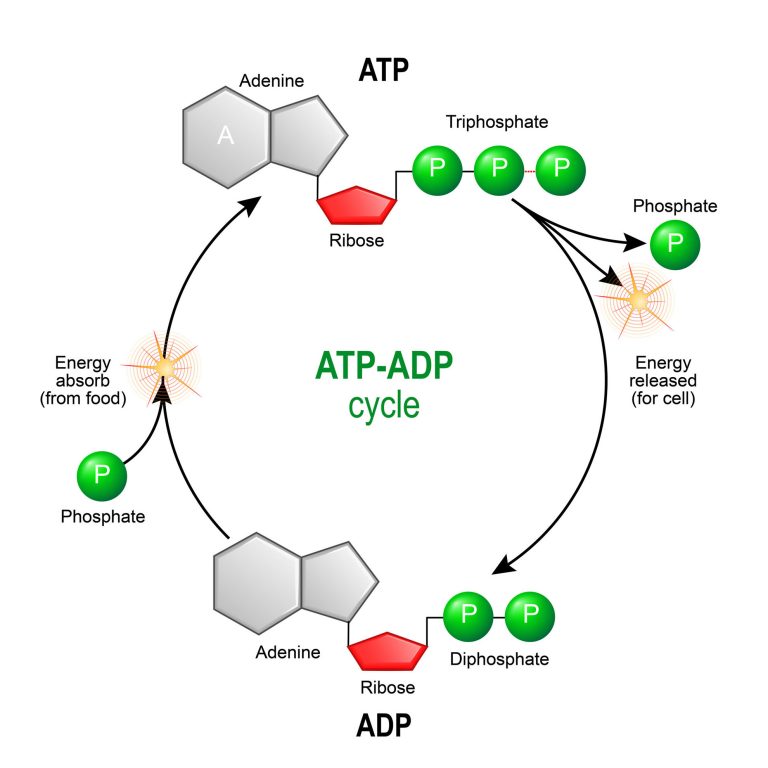
ATP-ADP cycle
Table of Contents
ATP stands for adenosine triphosphate, and is the energy used by an organism in its daily operations. It consists of an adenosine molecule and three inorganic phosphates. After a simple reaction breaking down ATP to ADP, the energy released from the breaking of a molecular bond is the energy we use to keep ourselves alive.
ATP to ADP – Energy Release
This is done by a simple process, in which one of the 2phosphate molecules is broken off, therefore reducing the ATP from 3 phosphates to 2, forming ADP (Adenosine Diphosphate after removing one of the phosphates {Pi}). This is commonly written as ADP + Pi.
When the bond connecting the phosphate is broken, energy is released.
While ATP is constantly being used up by the body in its biological processes, the energy supply can be bolstered by new sources of glucose being made available via eating food which is then broken down by the digestive system to smaller particles that can be utilized by the body.
On top of this, ADP is built back up into ATP so that it can be used again in its more energetic state. Although this conversion requires energy, the process produces a net gain in energy, meaning that more energy is available by re-using ADP+Pi back into ATP.
Glucose and ATP
Many ATP are needed every second by a cell, so ATP is created inside them due to the demand, and the fact that organisms like ourselves are made up of millions of cells.
Glucose, a sugar that is delivered via the bloodstream, is the product of the food you eat, and this is the molecule that is used to create ATP. Sweet foods provide a rich source of readily available glucose while other foods provide the materials needed to create glucose.
This glucose is broken down in a series of enzyme controlled steps that allow the release of energy to be used by the organism. This process is called respiration.
Respiration and the Creation of ATP
ATP is created via respiration in both animals and plants. The difference with plants is the fact they attain their food from elsewhere (see photosynthesis).
In essence, materials are harnessed to create ATP for biological processes. The energy can be created via cellular respiration. The process of respiration occurs in 3 steps (when oxygen is present):
- Glycolysis
- The Kreb’s Cycle
- The Cytochrome System
The following tutorial looks at the chemistry involved in respiration and the creation of ATP, and why oxygen is essential for respiration in the long term.
You will also like...
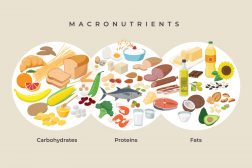
A Balanced Diet – Carbohydrates and Fat
Apart from vitamins, the human body also requires high energy sources such as carbohydrates and fats. If you want an ove..
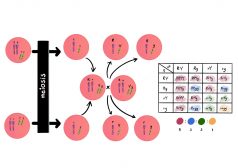
Independent Assortment and Crossing Over
This tutorial describes the independent assortment of chromosomes and crossing over as important events in meiosis. Read..

New Zealand’s Unique Geographical History
Explore why New Zealand has such unique flora and fauna, and learn why long periods of geographical isolation. This less..

Circulation
The circulatory system is key to the transport of vital biomolecules and nutrients throughout the body. Learn about the ..
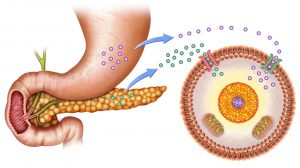
Sugar Homeostasis
The blood sugar level is regulated by two hormones. The mechanism behind this type of negative feedback control is descr..
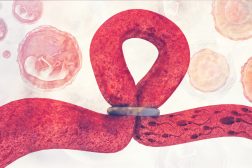
Birth Control and Contraception
Different pregnancy and birth control and contraception strategies are described. Read this tutorial to learn each of th..
